Tahdig – The Golden Star of the Persian Table
Tahdig — the golden, crispy crown jewel of Persian cooking. That irresistible layer at the bottom of the pot isn’t just food; it’s tradition, nostalgia, and a little friendly rivalry all rolled into one. Families gather around the table with eyes on that crunchy treasure, often sparking playful debates over who gets the biggest piece. When we were kids, one of my friends swore her mom would carefully portion out the tahdig so no one left the table disappointed. That’s how treasured it is. As an old Persian saying goes: “Whoever eats tahdig will have rain on their wedding night.”
What is Tahdig?
Tahdig is the crispy, golden layer that forms at the bottom of the pot in Persian cooking — and it’s often the most loved part of the meal. The word literally means “bottom of the pot,” but for anyone who grew up in an Iranian home, tahdig is much more than a cooking technique. It’s the highlight of the feast.
Tahdig is usually served alongside famous Persian stews like Ghormeh Sabzi (Persian Herb Stew)or khoresh Gheymeh, where it soaks up the rich, flavorful sauces like a crunchy sponge. It also pairs beautifully with mixed rice dishes such as Adas Polo (lentil rice), Sabzi Polo (herbed rice), or Baghali Polo (rice with dill and fava beans). But honestly — many people love eating tahdig all by itself!
Whether it’s made from saffron rice, thin slices of potato, crispy bread, or even lettuce leaves, tahdig is all about contrasts: crispy yet tender, golden yet fluffy, luxurious yet comforting. It’s that irresistible bite that brings everyone together at the table.
To achieve a delicious and crispy tahdig, the first crucial step is properly parboiling the rice. Parboiling means cooking the soaked rice in boiling water until the grains are tender yet intact; this helps the tahdig form perfectly. If you need detailed guidance on how to parboil Persian rice, check out our full guide on “How to Parboil Persian Rice” here.
Tahdig is not only common with steamed rice dishes (polo); it also forms in some “kateh” style dishes like tomato kateh, adding a unique and special flavor to the meal.
Popular Types of Tahdig You Should Know
While rice tahdig is the most famous, Persian cooks have come up with many delicious variations. Here’s a quick peek at the most popular ones — and soon we’ll share step-by-step recipes for each:
Types of Tahdig
From classic rice tahdig to the indulgent potato version, each type has its own charm:
Rice Tahdig: Fluffy basmati rice with a buttery, crispy bottom layer.
Potato Tahdig: Thin potato slices fried to golden perfection beneath the rice.
Bread Tahdig: Lavash or flatbread that turns deliciously crunchy.
Lettuce Tahdig: A lighter, refreshing twist with crisp lettuce leaves.
1. Rice Tahdig Recipe(Tahdig-e Berenj)
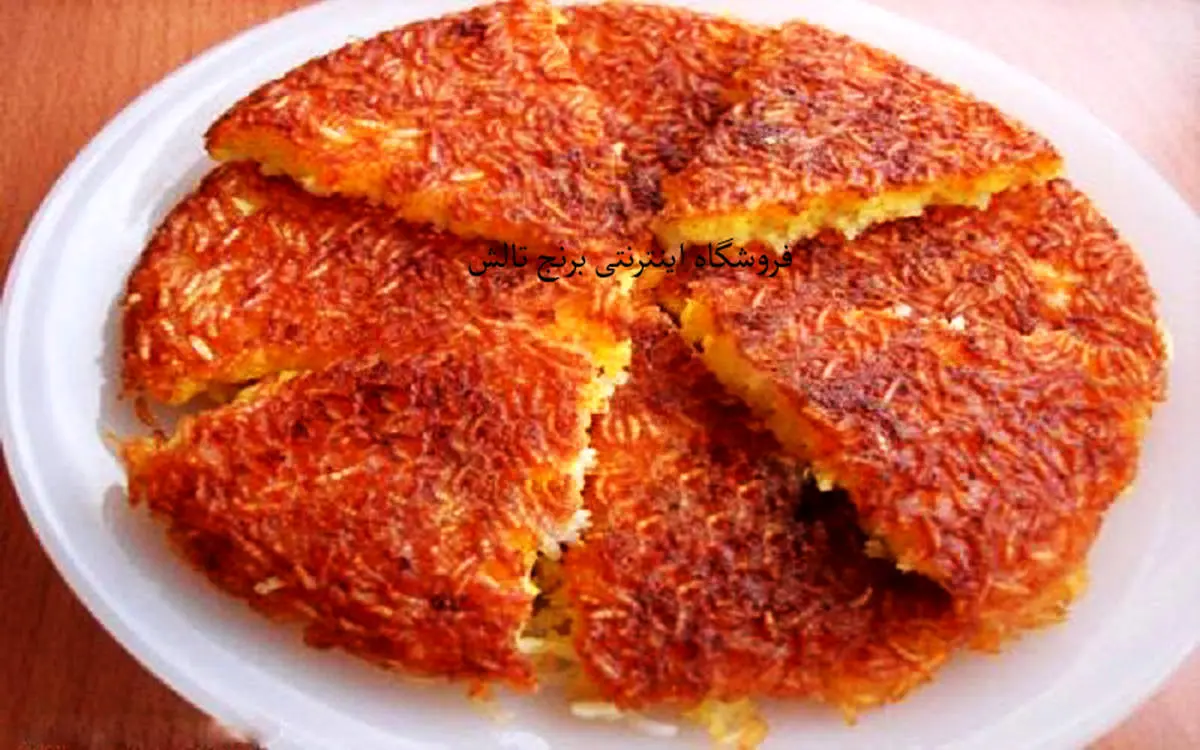
Simple tahdig is the foundation of every Persian meal. That golden, crispy crust made from plain or saffron-infused rice is the perfect companion to stews and side dishes, bringing everyone together around the table.
Step 1 – Prepare the Rice
Rinse your rice several times until the water runs clear, then soak it in water for a few hours.
Step 2 – Parboil the Rice
Boil the rice in salted water until the grains are tender but still firm in the center. Drain the rice.
Step 3 – Prepare the Pot
Warm a pot over medium-low heat and add some oil or butter.
Step 4 – Add Color and Flavor (Optional)
For a beautiful golden crust, stir a little
2. Potato Tahdig Recipe(Tahdig-e Sibzamini)
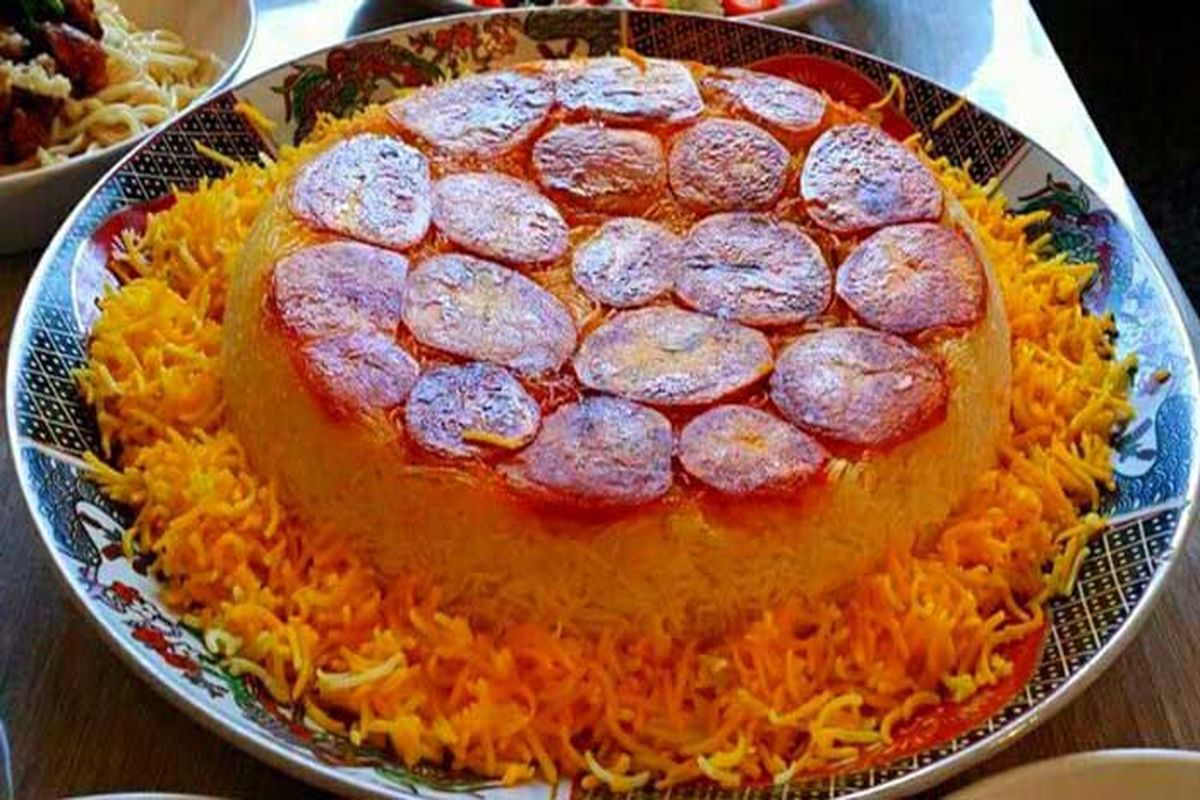
If you’ve ever sat at a Persian dinner table, you know tahdig is the first thing everyone has their eyes on—and potato tahdig is one of the absolute favorites. Golden, crispy potato slices layered under fluffy rice… it’s the kind of side that can easily steal the spotlight from the main dish! It’s also perfect not just for plain Persian rice, but for mixed rice dishes like Adas Polo (lentil rice), Reshteh Polo (noodle rice), or Loobia Polo (green bean rice).
Step 1 – Prepare the Potatoes
Wash and peel your potatoes, then slice them into medium-thick rounds—not so thin that they burn, and not so thick that they stay raw in the middle.
Step 2 – Flavor the Oil
Place your pot over medium heat and let it warm up. Add oil, then sprinkle in a little salt, turmeric, or saffron for that rich golden color and extra flavor. Swirl the oil around so it coats the bottom evenly.
Step 3 – Layer and Cook
Arrange the potato slices in a single layer at the bottom of the pot. Gently spoon the parboiled rice over them. Cover the pot with a lid wrapped in a clean kitchen towel (this helps trap steam—similar to a Persian damkoni) and cook over low heat for about 40 minutes, until the potatoes are crisp and golden. Flip the pot onto a serving platter to reveal your perfect potato tahdig.
3. Bread Tahdig Recipe(Tahdig-e Nan)
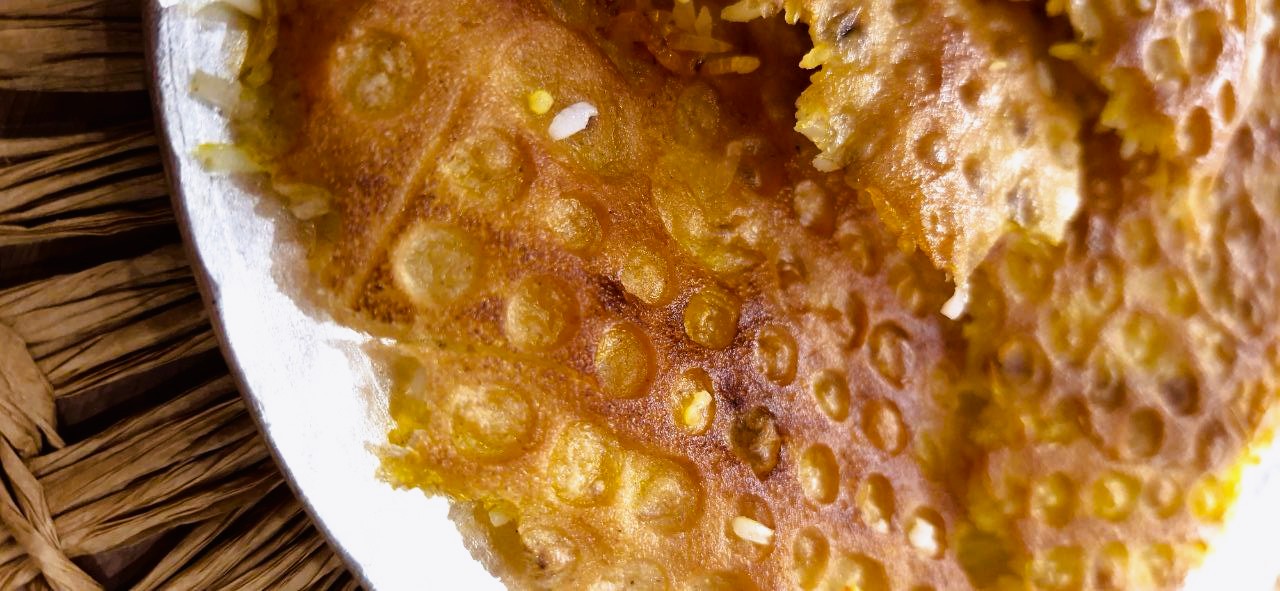
Lavash bread tahdig is one of the crunchiest and most beloved types of Persian rice crusts. It’s surprisingly easy to make at home, and the result is an irresistibly golden, crispy layer that pairs beautifully with stews like Ghormeh Sabzi or Gheymeh.
Step 1 – Prepare the base
Grease the bottom of your pot generously with oil. Cut the lavash bread to fit the base of your pot. If the bread is too small, use several pieces to cover the entire bottom. For thinner lavash, you can use two or more layers to make sure your tahdig turns out extra crispy.
Step 2 – Cooking the tahdig
Start by turning the heat up slightly so the bread begins to crisp and “set” at the bottom. Then lower the heat and gently spoon your drained, parboiled rice over the bread. Cover the pot with a lid wrapped in a clean kitchen towel (this acts like a Persian steam-trap lid cover, known as damkoni), which helps trap steam for fluffy rice. Let it cook for about 45 minutes on low heat.
Once done, you’ll have a golden, crunchy lavash tahdig that’s ready to steal the spotlight at your table!
4. Lettuce Tahdig Recipe(Crispy Persian Rice with Lettuce Leaves)
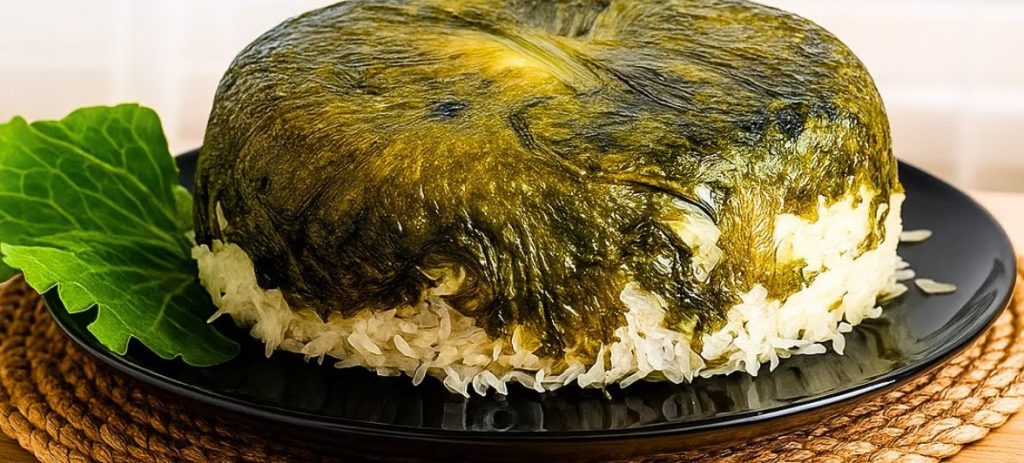
If you’re in the mood for a unique tahdig experience, lettuce tahdig is a fantastic choice. It works well with various rice dishes, especially mixed rice like Sabzi Polo (herbed rice), and adds a fresh, golden crunch to your meal.
Step 1 – Prepare the Lettuce
Select 4 to 6 large washed lettuce leaves. Trim any parts that won’t fit the bottom of your pot. To make them more flexible and easier to layer, blanch the leaves in boiling water for about 1 minute.
Step 2 – Oil and Arrange
Pour some oil and a pinch of salt into your pot. Arrange the lettuce leaves in the pot with the stems pointing toward the center.
Step 3 – Layer the Rice and Cook
Gently spread your parboiled rice over the lettuce leaves. Cover the pot with a lid wrapped in a clean kitchen towel (this helps trap steam, similar to a Persian damkoni). Cook on low heat for 30 to 40 minutes until the rice is fully steamed and the lettuce tahdig turns golden and crispy.
Your crispy lettuce tahdig is now ready to be served alongside your favorite Persian stews or enjoyed on its own.
Step 4 – Layer and Cook
Gently pour the parboiled rice into the pot and level it out. Cover the pot and let it steam on low heat for 30 to 40 minutes until the tahdig is golden and crispy.
Step 5 – Serve
Once cooked, carefully invert the pot onto a serving dish to reveal your perfect golden tahdig.
How to Serve Tahdig?
Tahdig is versatile and loved in many contexts. Most often, it’s served with rich Persian stews, where it soaks up the flavorful sauces. It’s also a perfect companion to fragrant rice dishes.
Here are some popular combinations:
- Ghormeh Sabzi (herb stew) + tahdig for a balance of rich flavors and textures
- Khoresht Gheymeh (split pea stew) + tahdig that soaks in the tangy tomato sauce
- Adas Polo (lentil rice) + tahdig adds crunch and contrast
- Sabzi Polo (herbed rice) + tahdig for a fragrant, crispy experience
No matter how you enjoy it, tahdig is always the part of the meal everyone reaches for first.
Tips and Tricks for Making Perfect Tahdig
- Don’t rush to remove the tahdig from the pot. After turning off the heat, wait a few minutes for the pot to cool slightly, then gently separate the tahdig.
- For a crispy, golden tahdig, be sure to grease the bottom of the pot and let the oil heat up before adding the tahdig.
- If you’re using thin bread for your tahdig, layer it two or more times to prevent it from becoming too dry.
- Adding spices like saffron or thyme to the oil enhances the color and aroma of your tahdig.
- Avoid keeping the rice covered in the pot for too long after cooking, as trapped steam can soften the tahdig and cause it to lose its crispness and shape.
- Keep the stove heat low to medium to ensure the rice steams properly and the tahdig turns golden and crispy.
FAQ: Common Questions About Making Perfect Tahdig
How long does it take to make tahdig?
Typically, it takes about 40 minutes to 1 hour for the rice to steam and the tahdig to form on low heat, depending on the rice type and soaking time. If the tahdig hasn’t formed after 1 hour, be careful not to burn the rice.
What type of pot is best for making tahdig?
Non-stick pots like Teflon or cast iron are ideal for clean, easy-to-remove tahdig. Stainless steel and aluminum pots (traditional “rooy” pot used in Persian cooking) can be used, but softer parts of the tahdig may stick and not come off cleanly.
How much oil or butter is needed to make tahdig?
A mixture of oil and butter in a 3:1 ratio (more oil) works best. For a medium pot, about 4 tablespoons of the mixture is enough to achieve a crispy, golden tahdig.
Which pot gives the best tahdig quality?
Non-stick pots such as Teflon and cast iron are the best choices for tahdig on rice or pasta. If you don’t have these, stainless steel or aluminum pots work, but ensure the tahdig is fully crisped to come off easily.
How long should the pot stay on the stove?
Rice usually needs 40 to 60 minutes to steam properly. Use medium to low heat. If it needs to cook longer, use a heat diffuser to prevent burning. After removing from heat, serve promptly because leaving the pot covered for too long will soften the tahdig and reduce its crispiness.
Why Tahdig Matters: More Than Just Crunch
Tahdig isn’t just about a crispy bottom layer; it symbolizes warmth, sharing, and family gatherings in Persian culture. Getting it just right is an art that many take pride in, and its irresistible texture keeps everyone coming back for more.
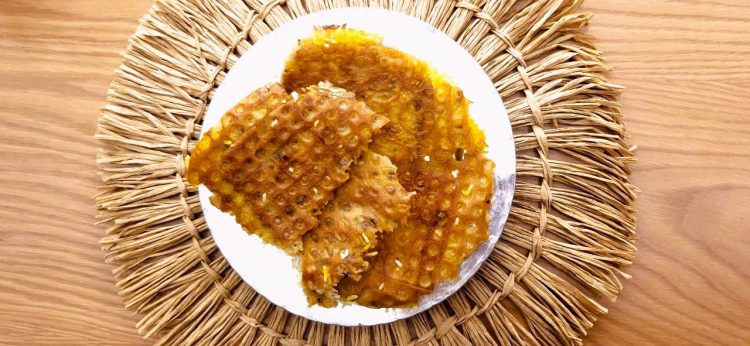


Pingback: Ghormeh Sabzi Recipe (Persian Herb Stew) - Mesry Tasty
Pingback: Fesenjan Recipes: From Classic Chicken to Meatballs & More - Mesry Tasty
Pingback: How to Brew Saffron (Persian Method)? - Mesry Tasty
Pingback: Adas Polo Recipe | Persian Lentil Rice - Mesry Tasty